- Dermatology
- Plastic Surgery
- Ariel N. Rad, M.D., PH.D.
- Face Cosmetic Surgery
- Breast Cosmetic Surgery
- Body Contouring
- Breast Cancer Reconstruction
- Destination & Travel Package
- Gallery
- Testimonials
- Boutique
- PRESS + BLOG

WHAT IS A FACELIFT (RHYTIDECTOMY)?
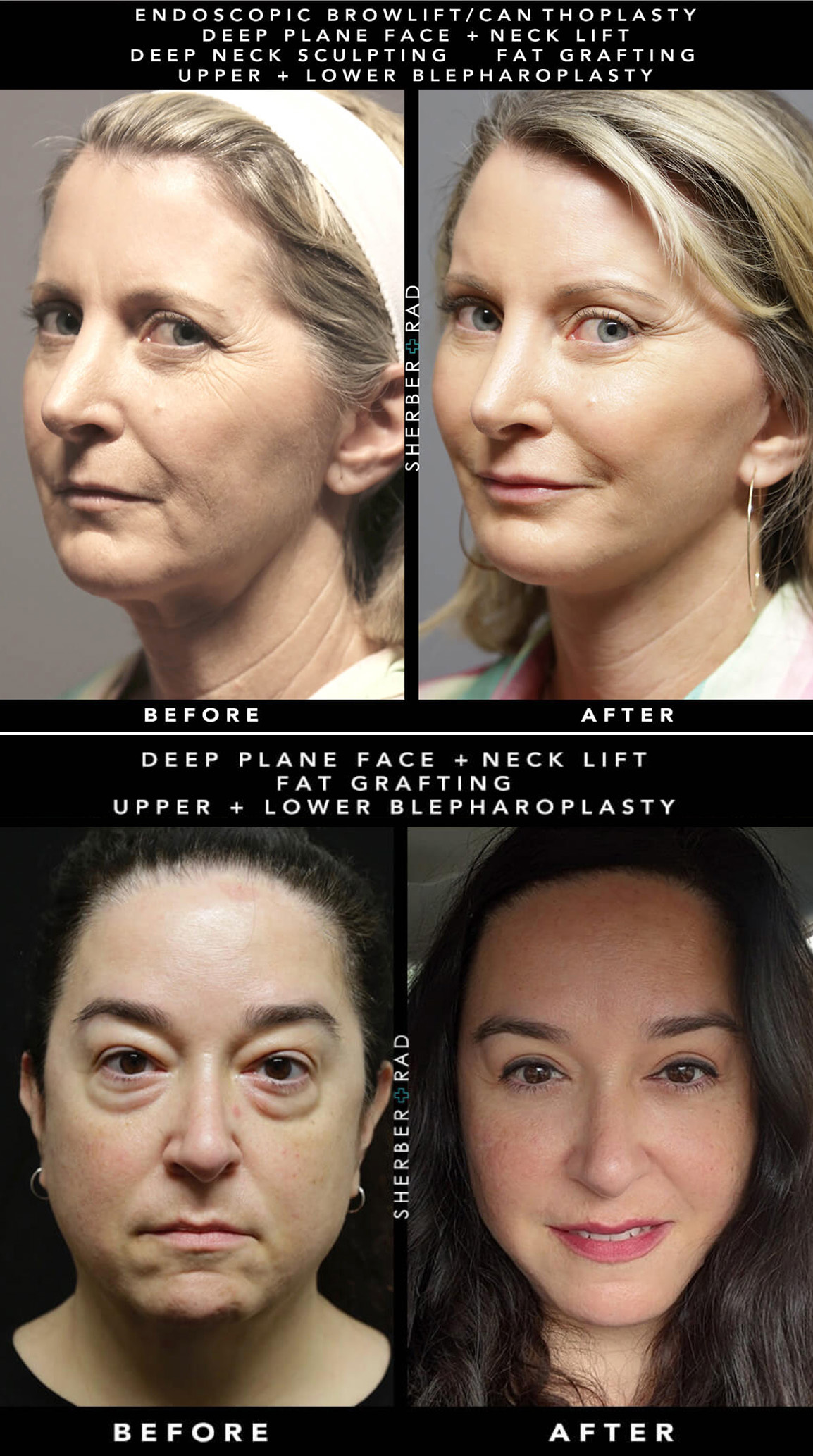

The facelift, or rhytidectomy, is an area of plastic surgery that Dr. Rad specializes in. The doctor is regarded as a top provider of this transformative surgery that is customized for each patient. As time passes, skin loses its suppleness and forms wrinkles, and soft tissues begin to descend, leading to sagging skin and the loss of youthful facial contours. Through the precision application of time-tested and emergent facelift techniques, Dr. Rad skillfully addresses the visible effects of aging.
Dr. Rad approaches facelift surgery with an objective that does not erase every fine line and wrinkle but instead, rejuvenates the patient’s facial appearance to a look reminiscent of their younger self. The most refined outcomes create a subtly refreshed version of your appearance, one that escapes the notice of casual observers and discourages speculation.
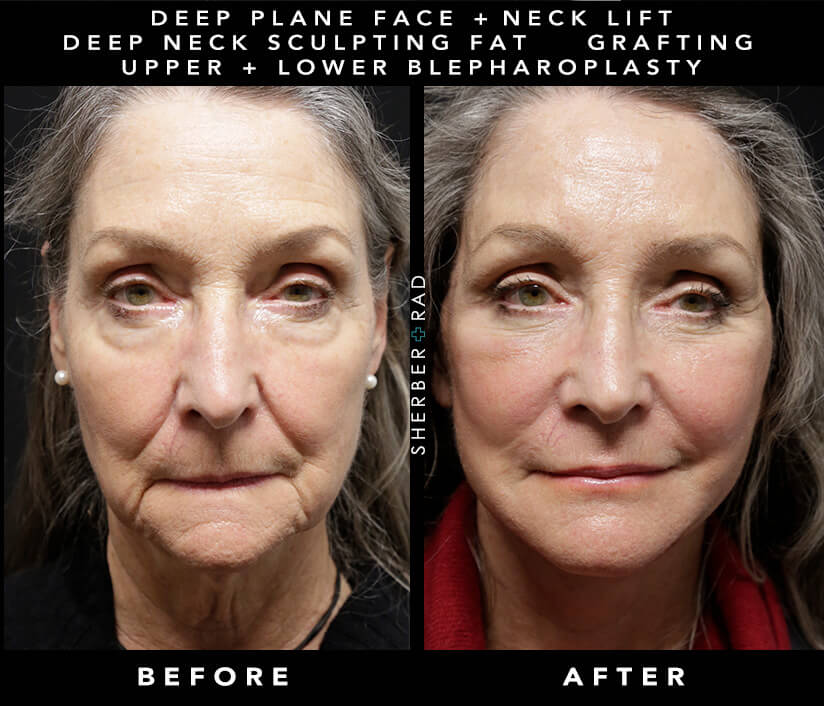
Deep Plane Face/ Neck Lift-
This is the gold standard in face lifting and Dr. Rad specializes in total face rejuvenation using this highly advanced method. It is best for those who have significant signs of aging such as loose skin and deep folds, lines, and drooping skin folds. Dr. Rad often combines this with eyelid lifts, brow lift and fat transfer.
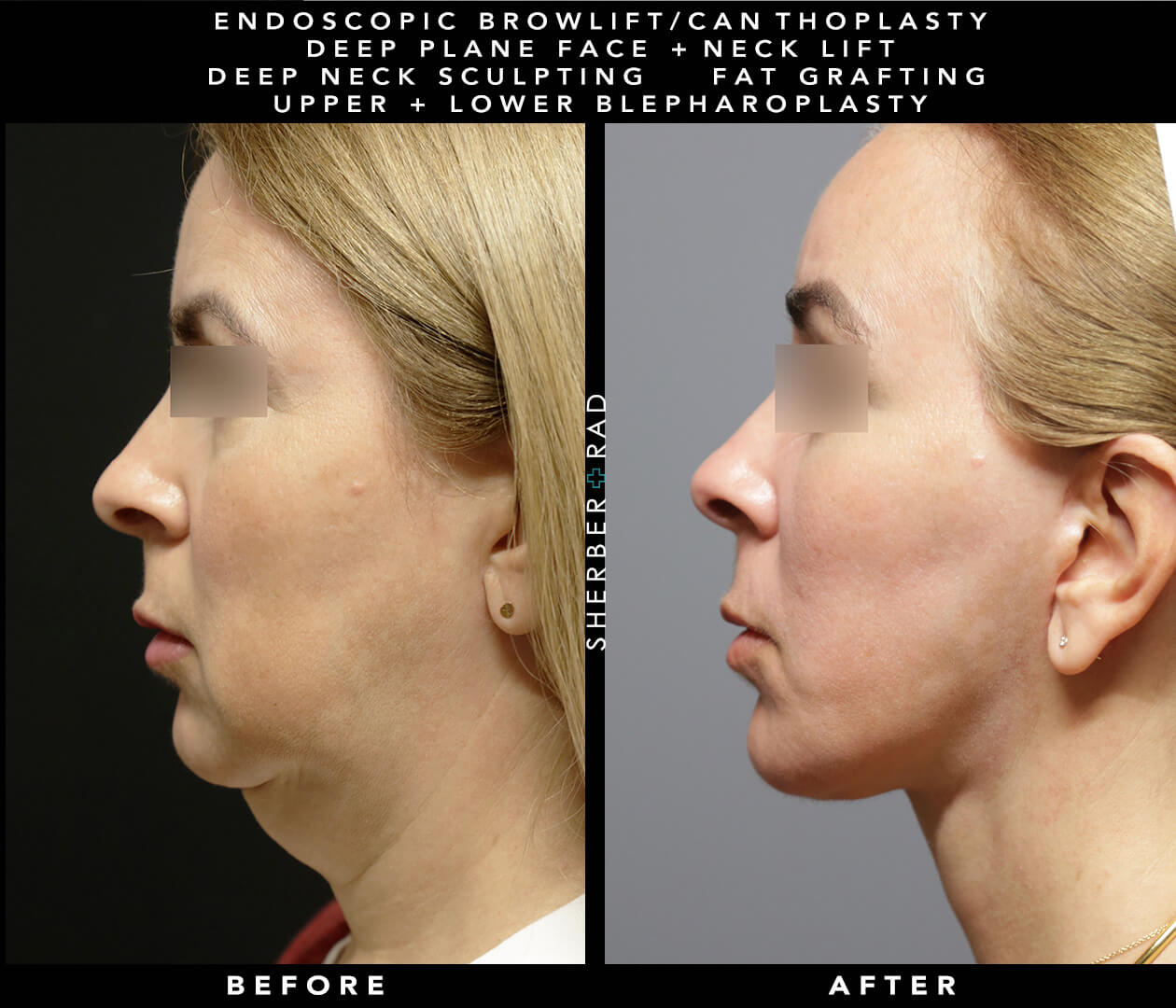
Deep Neck Sculpting-
This technique is often performed along with deep plane face and neck lift and is effective for patients who desire complete correction of fullness and blunted contour of the neck and jaw line.
Very few surgeons are trained to perform deep neck sculpting due to the high level of technical difficulty. Dr. Rad is one of a handful of surgeons who perform this technique routinely.
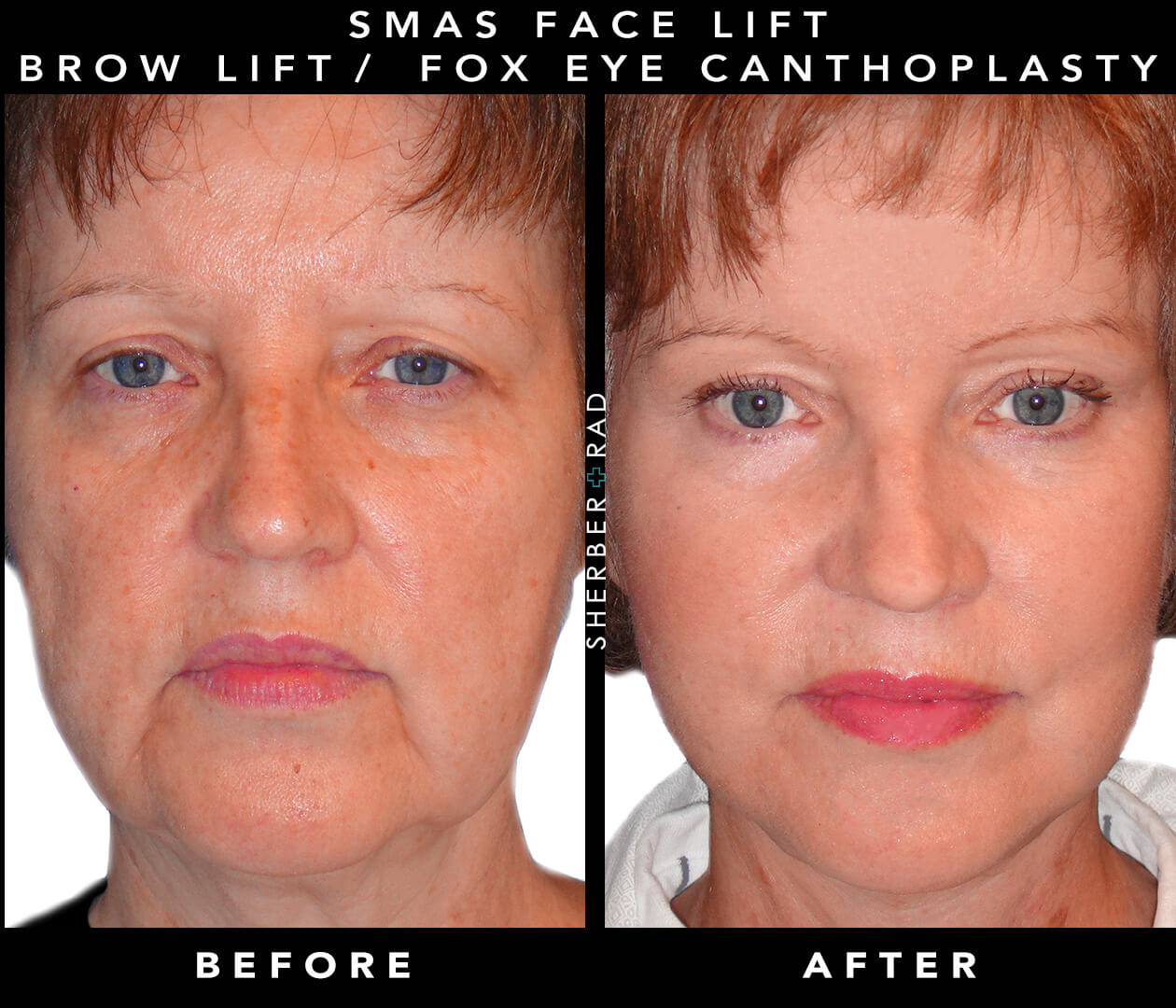
SMAS Face / Neck Lift-
Dr. Rad recommends this facelift method for moderate skin laxity in middle-aged patients. Along with the deep plane method the doctor is able address a comprehensive spectrum of facial aging concerns.
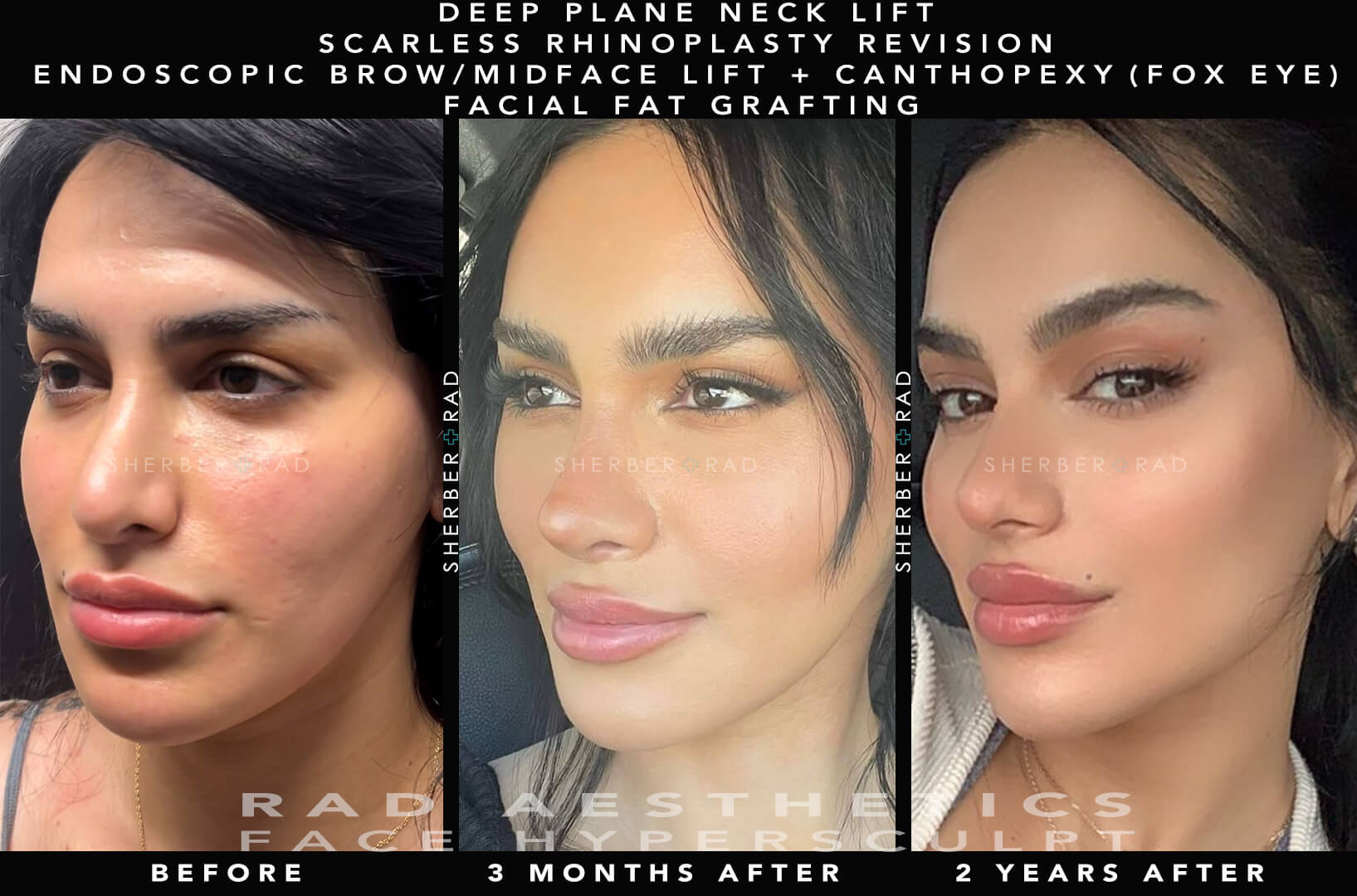
Ponytail Face / Neck Lift-
Ponytail facelift technique is best for those patients who need deep tissue sculpting but the elasticity is good. This method can optimize the patients facial shape with shorter incisions.
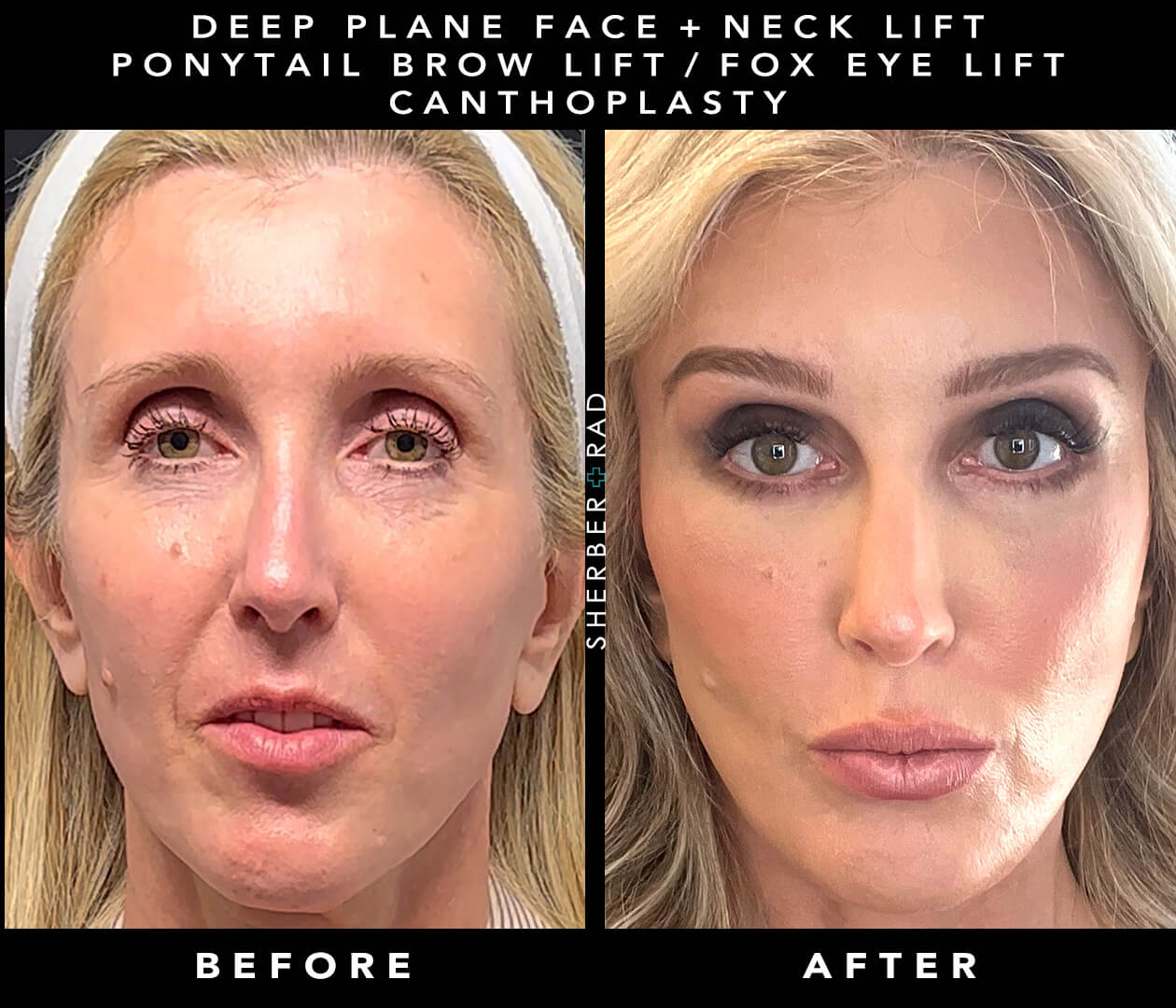
Midface Lift-
This technique involves lifting sagging cheek tissues and Dr. Rad often combines this with blepharoplasty, ponytail brow lift and canthoplasty “fox eye” lift to restore beautiful cheek contours.
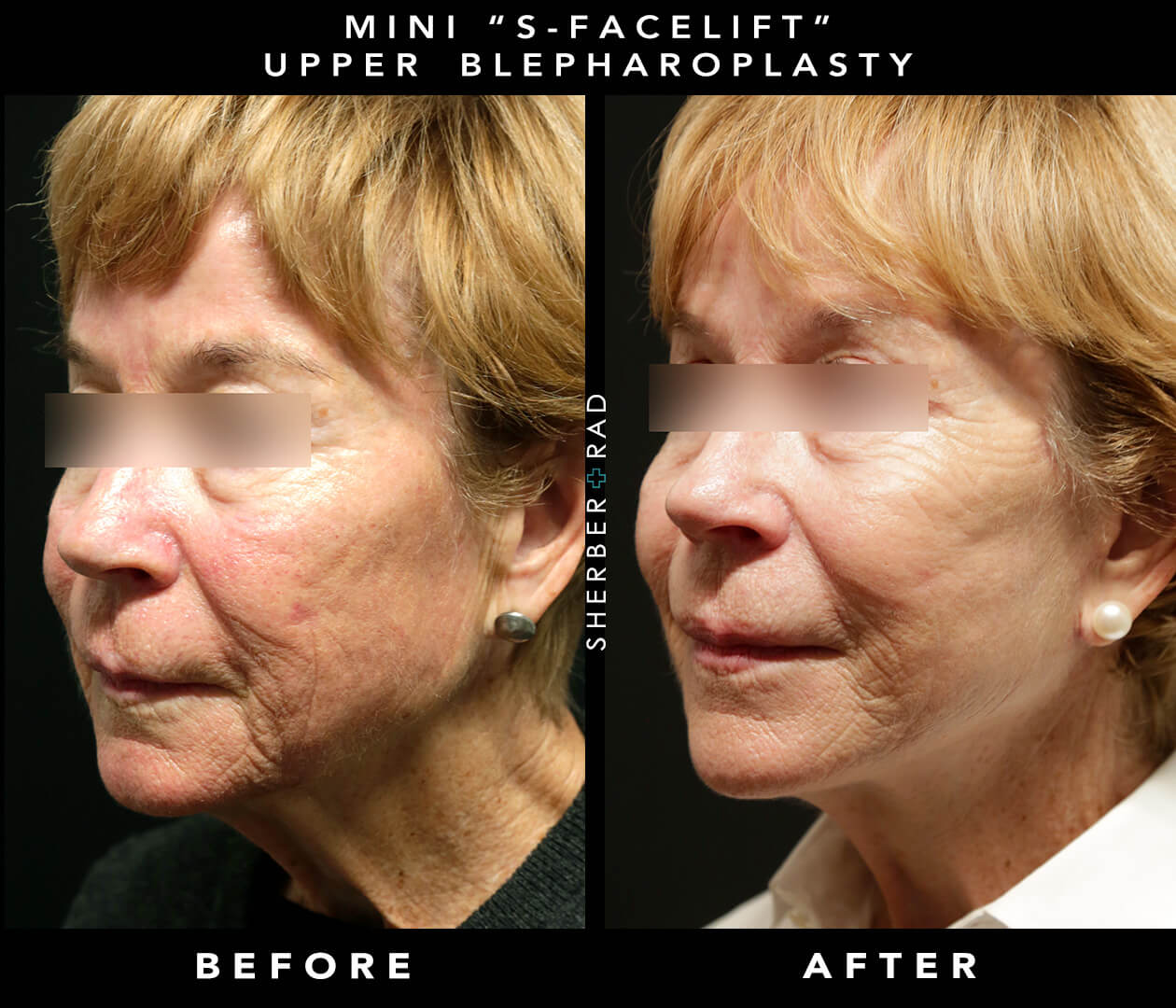
Mini or “S Lift”-
This technique can be done under local anesthesia and offers partial improvement in tissue laxity of the outer face/neck. As this procedure does not involve complete dissection, it offers minimal improvement to the central face/neck, nasolabial folds, marionette lines or under chin area.
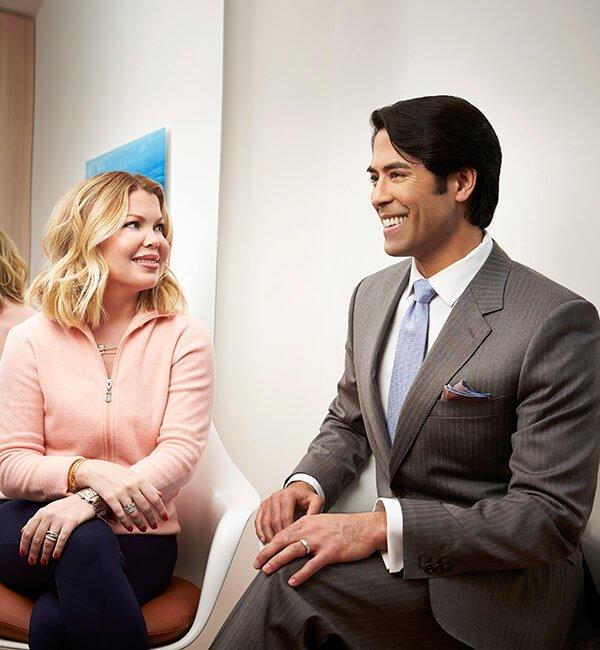

Dr. Rad’s approach is unique for each patient, and it combines sophisticated, state-of-the-art techniques to achieve natural and long lasting results.
A FACELIFT CAN HELP REVERSE THESE UNWANTED SIGNS OF AGING
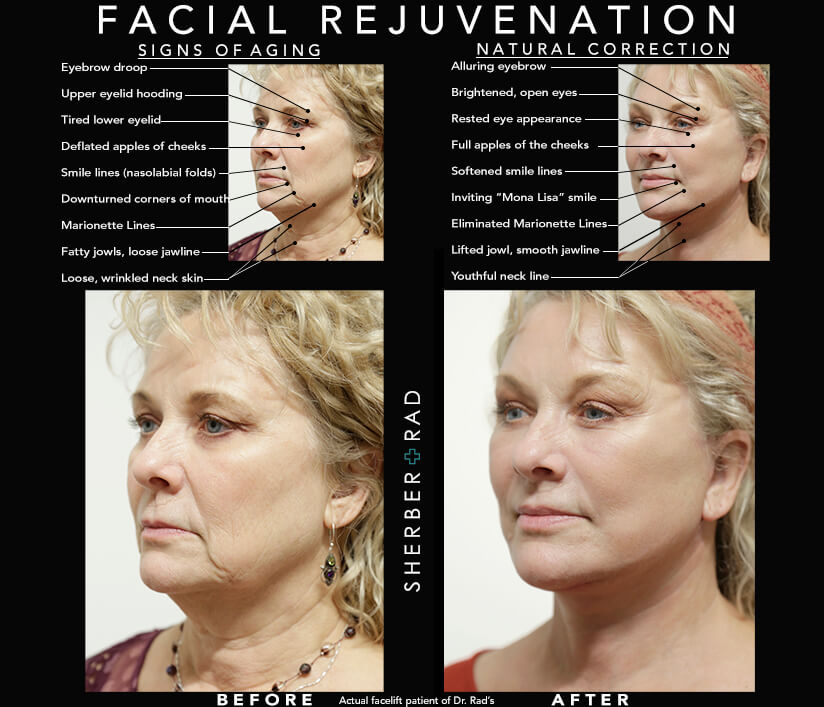
• Droopy eyebrows and hooded eyelids can create a sad appearance
• Bags and hollowing under lower eyelids gives a look of fatigue
• Deflated apples of the cheeks create sallow, unfeminine look
• Deep smile lines (nasolabial folds), downturned corners of the mouth and marionette lines caused by loose, droopy tissues
• Falling fatty deposits over the jawline called “jowls” which make the face look square rather than heart shaped.
• Loose, wrinkled neck skin and muscle bands create a “turkey neck” or “wattle”
Good candidates for facelift are in good overall health and who desire to look their best, naturally refreshed, and who don’t want the looks of a different person.
Age is irrelevant: DC and Northern Virginia Facelift patients of all ages can desire improvements.
A woman in her fifties or sixties may feel that her outer appearance doesn’t match the vibrancy and youthfulness she feels inside. On the other hand, someone who genetically never had a crisply defined neck line may opt for targeted neck lift. Slender and physically fit patients of all ages are often concerned to address sagging neck and jowls, deflated cheeks and hollowed eyes that are common with low body fat.
Regardless of motivation ideal facelift patients are self confident and engaged in life and in their professions, and they want to present their best faces to the world and not look extremely altered. Dr. Rad’s approach is to make subtle improvements in multiple areas of the face that add up to a rested and refreshed appearance.
Your vision for your results will emerge through detailed consultation with Dr. Rad, meticulous examination of your anatomy, and careful pre-surgical planning. While Dr. Rad’s surgical approach is unique for each patient, the goal of naturalness remains constant.
Actual Washington DC Face Life Patient of Dr. Rad’s
See More Top Facelift Results
Sherber+Rad cannot guarantee specific results.
Individual results may vary.
While facial aging is multifactorial, genetics and lifestyle are the two most important factors. Genetics are uncontrollable and fair skin people, such as those of Irish descent, will show wrinkling sooner than Asian or Mediterranean descendants. While we can’t change our DNA, we can adjust our lifestyle: heavy sun exposure and smoking unquestionably accelerate facial aging.
The effects of ultraviolet light from sun exposure is shown in the photo of this truck driver who, for fifty years of driving with his left face more exposed to the sun than his right face, developed severe wrinkling on the left side.
Since his right side was shielded from the sun within the truck cabin, his right face appeared more youthful. It’s a lesson that sunscreen is one of the best and simplest preventions of facial aging! But even if you’ve not maintained the best habits of preventive skincare, facelift surgery can help reverse the signs and effectively “turn back the hands of time.”
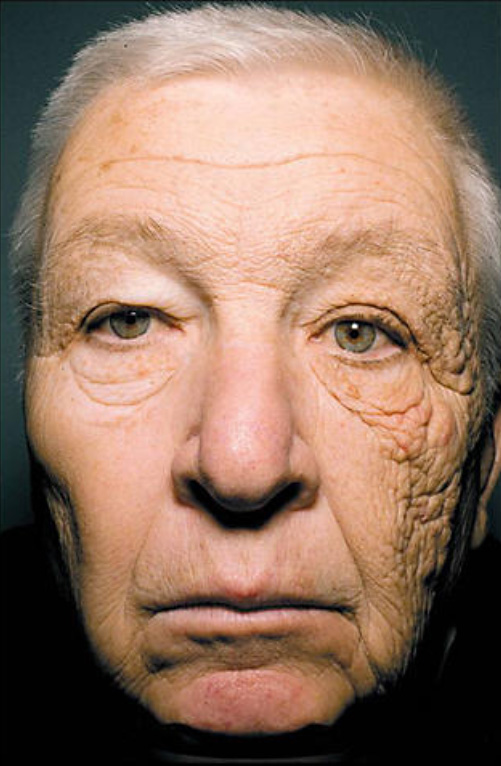
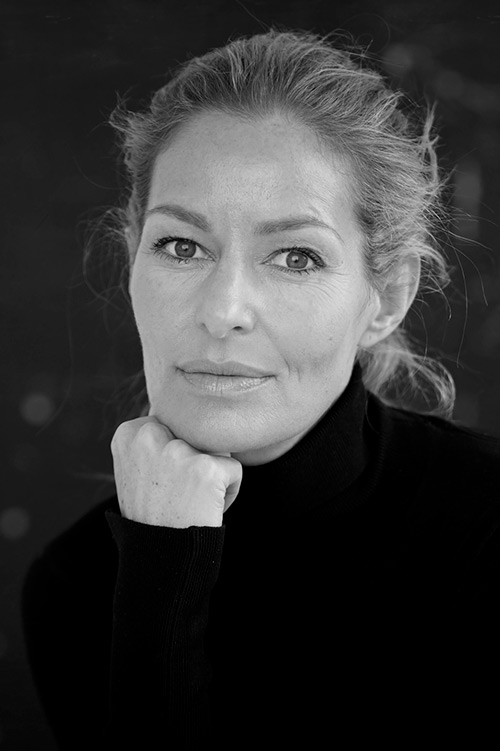 Starting with an unhurried and comprehensive consultation, Dr. Rad first endeavors to understand what details about your face bother you and why.
Starting with an unhurried and comprehensive consultation, Dr. Rad first endeavors to understand what details about your face bother you and why.
Most patients often lament they look tired, sad, grumpy or fatigued. While these feelings may not be present, age-related changes in the face trigger associations with these emotions. Patients may be concerned specifically about loose neck and jowl tissues, or sagging cheeks with deep nasolabial folds and marionette lines.
With a good understanding of your concerns, Dr. Rad then carefully examines your facial anatomy to determine the best approaches to address your concerns and explains in great detail what results can be achieved safely and with longevity.
Dr. Rad will advise on all options, from non-surgical skin tightening such as Thermage FLX and injectables, to targeted procedures such as lower face and neck lift, mini-facelift and S-lift, to more comprehensive procedures such as the SMAS facelift and deep plane facelift.
Oftentimes, patients are concerned with deflation and have grown tired of temporary injectable fillers. In these cases facial fat transfer is a powerful method to restore apples of the cheeks, undereye hollows, temple wasting, jawline and lips. Dr. Rad offers the full spectrum of aesthetic procedures from which the perfect plan can be tailored to meet your needs.
Dr. Rad’s patients often want a 100% correction with the most longevity of the results. In these situations, Dr. Rad uses his signature Deep Plane Facelift technique, a highly meticulous operation that offers the most rejuvenation while still preserving your identity.
The “deep plane” refers to elevating the muscle “SMAS” layer with skin mostly attached and lifting these tissue planes as a unit. By doing so, facial tissues are naturally lifted without a stretched appearance, scars heal beautifully, and recovery is about 2-3 weeks. The results? Rewinding the clock 10-20 years with results lasting 12-15 years before revision facelifting is needed.
Once you’ve settled on the best approach, pre-operative planning proceeds with medical clearance by your PCP and medical specialists as needed (for example, your cardiologist). We provide detailed pre- and post-operative instructions, and you will meet with Dr. Rad one more time before surgery to review your medical fitness and the overall surgical plan. Every aspect of your care is optimized and Dr. Rad works closely with board-certified anesthesiologists in a hospital-based ambulatory surgery center (ASC) for the highest degree of safety.
Surgery is performed under light sedation so that you are unaware of Dr. Rad’s work, but you are safe and comfortable and you emerge quickly afterwards. During surgery risks of hematoma and nausea/vomiting, the more concerning issues, are minimized with careful blood pressure control and expert anesthesia care.
Once your surgery is complete, a light bandage is placed and most patients are able to go home with family after about an hour or so in recovery. Since aging affects all areas of the face, combining facelift with brow lift, eyelid lifts, canthopexy, facial fat grafting and even rhinoplasty can give an overall balanced result, as Dr. Rad achieved for this patient shown below.
Dr. Rad seeks to achieve each patient’s unique goals safely and effectively: after all, your happiness is the primary objective. Based on years and thousands of facial aesthetic surgeries, Dr. Rad will guide you towards the most harmonious results. Oftentimes a patient may be focused on one area, for example tired eyes or cheek sagging, and s/he wants blepharoplasty or mid-facelift alone despite the neck being loose as well. In this situation just rejuvenating the eyes or the mid face without a neck lift can create an imbalance – youthful face, aged neck – making the person look more “done.” Nora Ephron famously said “Our faces are lies and our necks are the truth”. This is all too true which is why Dr. Rad is focused on the the total face to ensure believable rejuvenation.
A properly performed Washington DC facelift can take years off your appearance by reducing wrinkles, lifting sagging jowls, restoring crisp jawline definition, recreating youthful definition to your neck contour, plumping cheeks, effacing indentations in the tear trough, nasojugal folds (deep indentations across the cheeks), the nasolabial folds (deep crevices from base of the nose to the mouth), and marionette lines (downward turning corners of the mouth). Nothing compares to a DC facelift in its power to rejuvenate the face.
There are many facelift techniques described such as mini-facelift, SMAS facelift, “short scar” or S-lift, deep plane facelift, MACS lift, mid facelift, ponytail lift…and the list goes on. Many of these techniques have been popularized by media hype, but scientific research has proven that one is not necessarily better than another; rather, the surgeon’s experience and skill are the most important factors. Dr. Rad has performed nearly all facelift techniques and, having performed thousands of facial aesthetic surgeries, his breadth of experience and expertise informs his unique approach for each of his patients. Patients shouldn’t focus on finding the best technique but rather the best facelift surgeon.
Many factors go into this decision: your underlying skeletal anatomy, degree of tissue droop, which areas of your face are highest priority (jowl? cheeks? neck?), your goals (how many years to rewind the clock?), length of scar, how much downtime you can take, whether other procedures should be combined (browlift? eyelid lift? fat transfer?). Dr. Rad will draw on well over 10 years of facelift expertise to tailor the best approach for you. Usually Dr. Rad’s technique will involve release and elevation of the SMAS (Superficial Musculo-Aponeurotic System), the muscular layer of tissue that forms the foundation of the face, such as in the deep plane or SMAS flap technique.
Many different facelift techniques sprouted from the foundational knowledge of facial anatomy since the 1970s. Each technique aimed to improve upon older methods to improve natural results and longevity. However, more techniques caused confusion as to which technique was “best.” Was it the “Deep Plane Technique”? “SMAS Flap Facelift”? The “SMASectomy Facelift”? The “Composite Facelift”? The “Subperisoteal Midfacelift”? The debate raged on until 2009 when the answer came from the famous “twin” study which compared the longterm facelift results of two pairs of identical twins on whom 4 different surgeons performed their signature facelift technique (one surgeon per twin). For example, amongst a pair of twins, one of the twins underwent Dr. Hamra’s composite facelift, while the other underwent Dr. Baker’s SMASectomy. All twins were followed for 10 years and results compared. While there were slight differences in the aesthetic results, all patients had good outcomes, and thus the conclusion was that the technique is not nearly as important as the skill of the surgeon. Today that still holds true. Although different techniques feature variations in recovery, scars and aesthetic results, a surgeon’s skill, above all else, is the most crucial factor to obtaining an excellent result.
While a facelift elevates and plumps sagging, flattened cheeks, it doesn’t improve skin tone, texture and evenness of the facial skin. Without other treatments brown spots, large pores and fine lip lines will remain. This is why Dr. Rad often collaborates with Dr. Sherber to perform laser and anti-aging skincare treatments for the freshest result. The facelift also does not address the upper face (i.e. above the cheeks), and Dr. Rad often performs eyelid lift or browlift simultaneously.
Yes! Dr. Rad often performs other procedures with facelift to enhance your results, including eyelid lift, browlift, rhinoplasty, facial fat transfer, and laser resurfacing. However, if you desire a targeted result, such as sharper neck and jawline, or lifted cheek contours, then a focused facelift is the ideal treatment. The decision to combine procedures is based on what you’re looking to achieve and also whether it’s safe. In careful consultation with Dr. Rad, many patients can enjoy beautiful results from combination procedures.
In short, yes! A facelift is a permanent solution that, when done properly, will pay for itself over time. When compared with years of temporary fillers and other non-surgical treatment, a facelift not only is less expensive in the long run, but it also gives more natural, permanent results. For instance, if you spend $2,500 per year on injectables and skincare, then in about 5-6 years you’ll have spent the equivalent dollar amount for a facelift. Not only that, you’ll get the most rejuvenated result immediately after a facelift, as compared with partial and temporary results with other treatments. Finally, 5-6 years after a facelift will still look refreshed as compared with looking unchanged or even older after repeated filler injections.
Patients enjoy many advantages of combining procedures beyond enhanced results: (1) one recovery period, (2) significant cost savings as compared with separate surgeries, and (3) “balanced” results with aging process in sync for all areas of the face.
With regard to cost savings, oftentimes patients can save many thousands of dollars. The reason is because you’ll be eligible for multi-procedure concessions (discounts) upwards of 5%, 10%, 15% or even higher. The tier of concession depends on how many procedures are selected. Also, a “base” operating room fee (i.e. for renting the OR and staff time, and for anesthesia), about $1,500 is charged for each surgery. So one surgery as compared with two results in an immediate $1,500 savings.
If you have good skin elasticity and you’re concerned with slight looseness and thinning of your facial skin, Thermage FLX is the only science-proven skin tightening device available. It is a “smart” version because Thermage FLX can adjust energy delivery to tissues just enough to cause skin tightening but not too far to risk a burn. This fine tuning cannot be achieved with all other technologies which deliver heat without sensing tissue temperature. Using other devices, providers usually err on the side of under-treating which results in no effect, because overtreating can result in a burn. Therefore Thermage FLX is the only skin tightening device that delivers reliable results. This in combination with dermal fillers or facial fat grafting can be very effective to volumize deflated tissues such as the cheeks, temples, lips and jawline. Dr. Rad customizes each patient’s plan to optimize results while minimizing downtime, bruising and swelling.
In short, no but there is an important role for non-surgical skin rejuvenation. Think of a facelift as a “reset” of your facial anatomy to where it was 5, 10 or 15 years ago, without overfilling to compensate. Facelift smooths creases and deep lines naturally by lifting sagging tissues, rather than by filling them which can easily create an unnatural “blowfish” appearance. Threads to hike up sagging skin are attractive in concept but threads don’t address the deeper foundation of facial tissues to give a long term result. Furthermore, unsightly bunching of skin is common and odd looking. The only beneficial non-surgical skin tightening treatments are Thermage FLX and laser resurfacing which improve skin texture, tone and fine lines around the mouth and lips, crow’s feet and pores which facelift cannot do.
With meticulous technique scars are well hidden in the natural shadows around the ear, and with ear therapy can virtually fade away over time. Also keep in mind that people with whom you interact will not be on the lookout for scars. All in all, scars are a small downside to beautiful rejuvenation.
Facelift recovery is ranges from 1 to 4 weeks, with an average of 2 weeks, depending on the extent of surgery. Recovery relates to swelling which is most significant in the first few days, but rapidly decreases thereafter. You can expect to return to work confidently in about 3 weeks, unless you require absolute discretion and assurance that all conspicuous evidence of surgery has disappeared, in which case an additional week may be needed. After facelift in DC Dr. Rad’s patients often seek the “just back from holiday” rested and refresh appearance, and so Dr. Rad’s techniques are focused on rapid recovery.
Swelling and bruising are common and significant in the first few days to a week. You may not recognize yourself during this time, but rest assured that in Dr. Rad’s hands your result will emerge beautifully with time and meticulous post-surgery care. You’ll see Dr. Rad on day 1 or 2 post-surgery, and then again at 1 week for suture removal. Intensive scar therapy with anti-inflammatory skincare begins when sutures are removed. At two weeks or later, patients seeking rapid fading of visible scars often opt for laser scar therapy with Dr. Sherber. Beyond a month, patients transition to Dr. Sherber’s care for ongoing maintenance of their results with
With the right technique Dr. Rad’s patients often enjoy their results up to 12-20 years, depending on genetics, sun exposure and skin care, before considering a revision.
In general a targeted mini-facelift can last 3-5 years whereas a SMAS facelift or deep plane facelift can last up to 15 years or even longer. Keep in mind the longevity of your results are determined by both uncontrollable factors (genetics), and controllable factors which include: avoiding smoking, avoiding sun exposure, religious use of an anti-aging skincare regimen under Dr. Sherber’s direction, and maintenance therapy such as laser resurfacing and Thermage FLX. Under Drs. Sherber and Rad’s care your results can sometimes last a lifetime!
Dr. Rad’s Washington DC and northern Virginia facelift patients want to look refreshed, rested and vibrant and, above all, natural. The Miami or LA aesthetic may be unfitting for the sophistication and nuance Dr. Rad’s Washington facelift patients expect. And to achieve the best facelift results small improvements in multiple areas, rather than major overhauls, can give the appearance of “just back from holiday” while still looking natural. After all, facial cosmetic surgery is not a “one size fits all” endeavor, and following in depth consultation with his patients Dr. Rad meticulously crafts the approach to meet their unique needs.
Dr. Rad is the complete plastic surgeon: not only does his board certification, education and training at the world’s top institutions speak for themselves, but also his surgical skill and aesthetic vision are unmatched. Patients all over the world seeking top facelift surgery expertise see the artistry in Dr. Rad’s work, particularly when comparing his before/after with those of other plastic surgeons. Expertise is developed over time: with well over a decade and thousands of facial aesthetic surgeries in experience, Dr. Rad built his reputation as the top plastic surgeon in DC and northern Virginia by focusing on each individual patient and his surgical approach for facelift procedures is nuanced and targeted to create subtle improvements in multiple areas that result in youthful, refreshed and natural results overall. Furthermore, Dr. Rad is an authority in facial aesthetic surgery: as Director of Aesthetic Plastic Surgery at Johns Hopkins from 2009-2013, he trained junior plastic surgeons in aesthetic surgeon and he has lectured to surgeons around the world in scarless, minimally-invasive facial surgery techniques. Across all doctor review websites, you’ll find that Dr. Rad’s patients are thrilled with their results. Dr. Rad was ranked by threebestrated.com, an independent group that is non-paid, a top 3 plastic surgeon in Washington DC. Finally, in addition to exceptional artistry and expertise Dr. Rad is also known for his kind and caring “bedside manner.” Patients uniformly find comfort knowing that Dr. Rad is the “full package” in a plastic surgeon.
Dr. Rad considers patient safety to be the highest priority. As such, DC and northern Virginia facelift patients should not have debilitating heart, lung or kidney disease, and usually don’t need extensive pre-surgical work-up. While risks of facelift surgery are low, Dr. Rad takes all precautions for safe anesthesia and surgery. If anesthesia is not an option then a mini-facelift often can be performed comfortably with local (topical and injected) numbing medicine. However, when anesthesia is needed Dr. Rad performs surgery solely in the best hospital systems in DC and northern Virginia: Sibley Memorial, George Washington, and Inova Fairfax Hospitals. By comparison, in-office surgery rooms, while less costly, are not as safe as hospital based facilities which are staffed by board certified anesthesiologists and experienced nursing staff.
Yes! There are many factors to consider when seeking a plastic surgeon for facelift. Here are several of the most important ones to keep in mind: 1. Ensure your surgeon is certified by the American Board of Plastic Surgery. When it comes to cosmetic surgical experience, board certification in any other specialty or field is largely irrelevant. Therefore, be wary of claims of “double board certified” or “triple board certified” as these additional certifications rarely contribute to a surgeon’s experience. 2. Consider his/her education, training and professional background. Are they world class and known for excellence? Not all institutions are created equal. 3. Ensure your surgeon stays current with modern techniques: an indication of this is academic affiliations such as professorships or directorships. 4. Understand your surgeon’s philosophy and his/her aesthetic: each surgeon has a different approach and vision, and they should align with yours. Facelift surgery is a niche requiring exceptional technical ability, experience and nuance to achieve natural and long-lasting results.
In short, choose the most qualified plastic surgeon. It is a fact, proven by scientific research, that the single most important factor in achieving superior results is the surgeon performing the work. Therefore, when selecting a surgeon, you should consider the quality of the surgeon’s education (not all schools and institutions are created equal), the number of years of surgical experience after training (a surgeon fresh out of training has relatively little experience), the number of facial cosmetic procedures the surgeon has performed (surgeons improve with time and experience), the surgeon’s record of teaching other surgeons (demonstrates leadership and mastery), certification by the American Board of Plastic Surgery (ABPS) (certified members have met high standards of patient care), and the surgeon’s ability and “talent” as demonstrated by before/after photos. Dr. Rad fits all these criteria and is known for his technical ability and artistry.
All patients must undergo “medical clearance” by their primary doctors and possibly from specialists. Additional medical tests and blood work may be needed and we will guide you.
Facelifting was invented centuries ago but only in the last 50 years has the modern facelift truly evolved. Early facelift techniques focused on skin tightening without addressing deeper structures, which resulted in unnatural “windswept” looks. Sadly, we sometimes still see these altered appearances due to telltale signs such as flattened midface, “Joker’s mouth,” tragus pull with external ear canal show, “pixie ear deformity,” and “noose neck deformity”. Also, any rejuvenated appearance tended to be short-lived, lasting a few months, as the skin and tissue once again loosened with tension. Based on pioneering work by anatomists named Mitz and Peyronie, plastic surgeons realized that the most important tissue layer to lift for long-lasting, natural appearing facelifts is the Submuscular Aponeurotic System, or SMAS, which contains all the facial muscles we use for facial movement, invested within connective tissues. SMAS facelift procedures were studied and developed to improve results and SMAS lifts became the standard method in the late 20th century.
Some patients ask to minimize surgery but still achieve a complete result. In these situations we can often make great strides by combining a mini-facelift with dermatology treatments such as fractionated non-ablative laser, Thermage FLX and injectables such as Botox and dermal fillers. In the rare circumstance in which a patient is not a good candidate for surgery, non-surgical dermatologic approaches convey many benefits: improved skin texture and tone, modest revolumization, little to no recovery time. These are best for younger patients looking to delay the need for surgery, for patients who have had surgical lifts to maintain their results, or for patients with medical concerns. However, once tissues have sagged, non-surgical treatments cannot make permanent and significant architectural improvements. Nonetheless, Drs. Sherber and Rad often collaborate to optimize results with minimal invasiveness, and our patients can enjoy wonderful results that such synergistic treatments deliver.
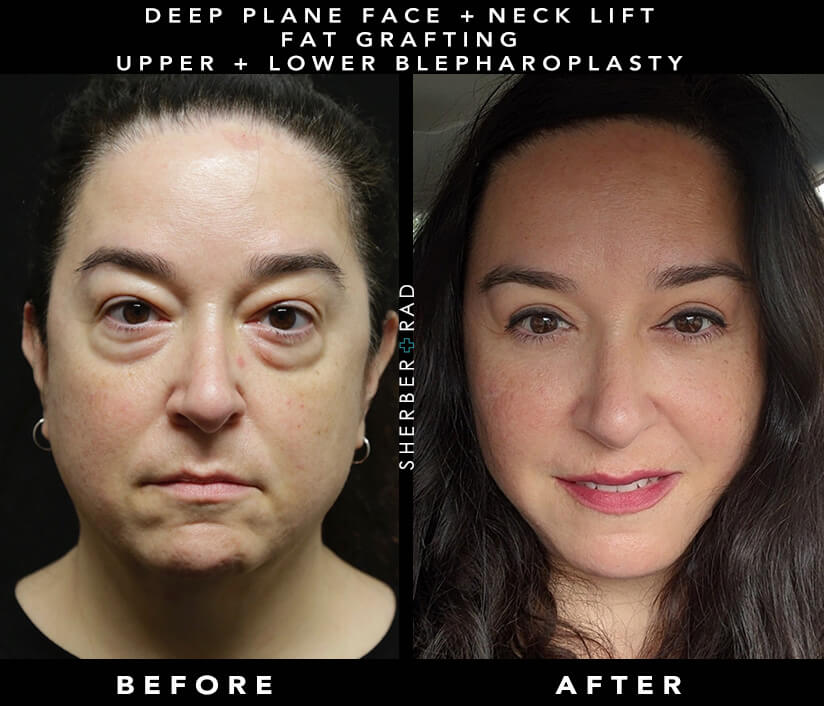
Recovery is a process of tissue healing and feeling back to normal that requires time. The length of time depends on which facial areas are treated, the complexity of surgery, and individual healing factors. The key principle of surgery that Dr. Rad always adheres to is minimizing surgery to achieve best results, thus minimizing healing and recovery time. The recovery process after a facelift can vary from person to person, but here are some general guidelines:
You will be escorted by the anesthesia team from the OR to the recovery room (PACU). Your head will be wrapped with a light dressing and you will have drainage tubes to remove excess fluid. Tissue swelling is moderate and due to the injection of numbing medicine throughout facial tissues. Pain is mild and you will spend a few hours in PACU before being released to go home or to your hotel. Discharge criteria are drinking liquids, good pain control, ability to walk with minimal assistance, and no need for IV nausea medicine. Because anesthesia is light, most patient meet discharge criteria within a few hours.
Recovery can be either at home or a hotel. For your safety, as you’ll be somewhat sleepy, you will need a responsible adult to stay with you for at least the first night. We work with experienced private duty nurses for those who prefer this.
We have a relationship with The Jefferson Hotel, the only privately owned 5 star boutique hotel in downtown DC, close to our office. Their back-door access allows patients to go straight to their room without crossing through the main lobby. Dr. Rad has personally trained hotel staff to help his patients enjoy a private and comfortable recovery. They can help meet any needs and requests, from private dining to helping obtain basic supplies. We have a private room rate arrangement with The Jefferson for patients to enjoy 20% off best rates. (Note that we do not receive any payments for patient stays at The Jefferson – it is purely for patient comfort and convenience.)
Once home or in hotel, you will mostly rest, although you should be able to perform “activities of daily living”, meaning being up and about and doing basic self care. Since your head will be wrapped, you’ll defer showering until your first post-op appointment with Dr. Rad 1-2 days after surgery.
During the daytime you should walk 10-15 minutes each hour. You should not be on bed rest.
Pain is relatively mild and most patients need a mild pain medicine to help them sleep. Tissues react with swelling and bruising that distorts facial appearance and causes facial muscles not to work normally, but this is normal and temporary. Cold compresses and head elevation helps with comfort and swelling.
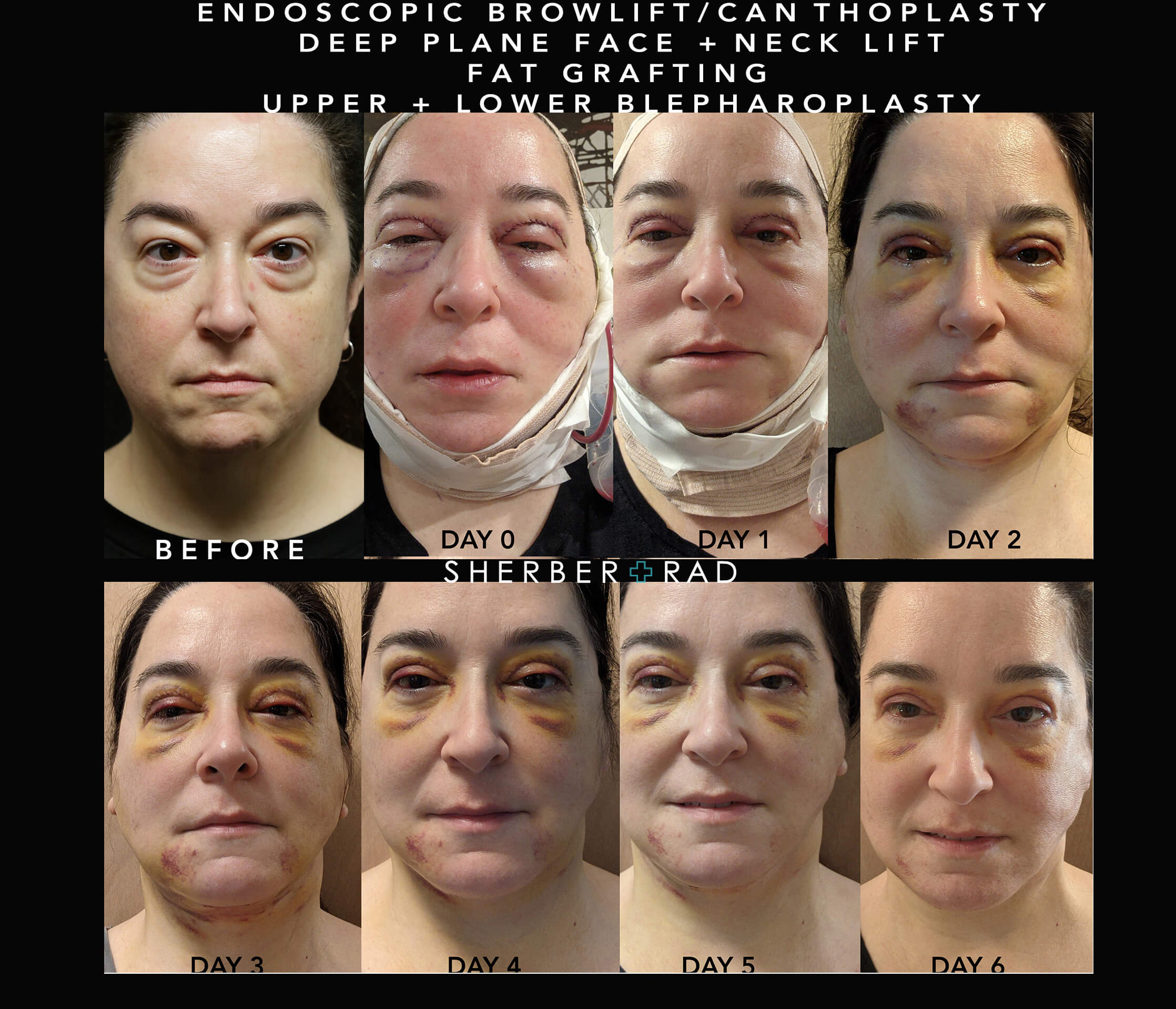
Since nausea is not uncommon after anesthesia, no matter how light the anesthesia given, nausea prevention is essential and straight forward by taking an anti-nausea medicine such as Zofran (Ondansetron). Nausea side effects typically wear off in 24-48 hours.
Other side of effects of anesthesia include feeling a bit groggy or “out of it”, but this is relatively mild and wears off quickly. Dr. Rad recommends not planning important work-related activities or phone calls as you will not feel your sharpest.
Drinking liquids is most important to maintain hydration. Dr. Rad recommends Gatorade, or Drip Drop and Liquid IV electrolyte replacement powders mixed in water.
If deep neck sculpting has been done then patients often feel some neck tightness that is normal, common and temporary. You will see Dr. Rad within the first few days to check on your early healing.
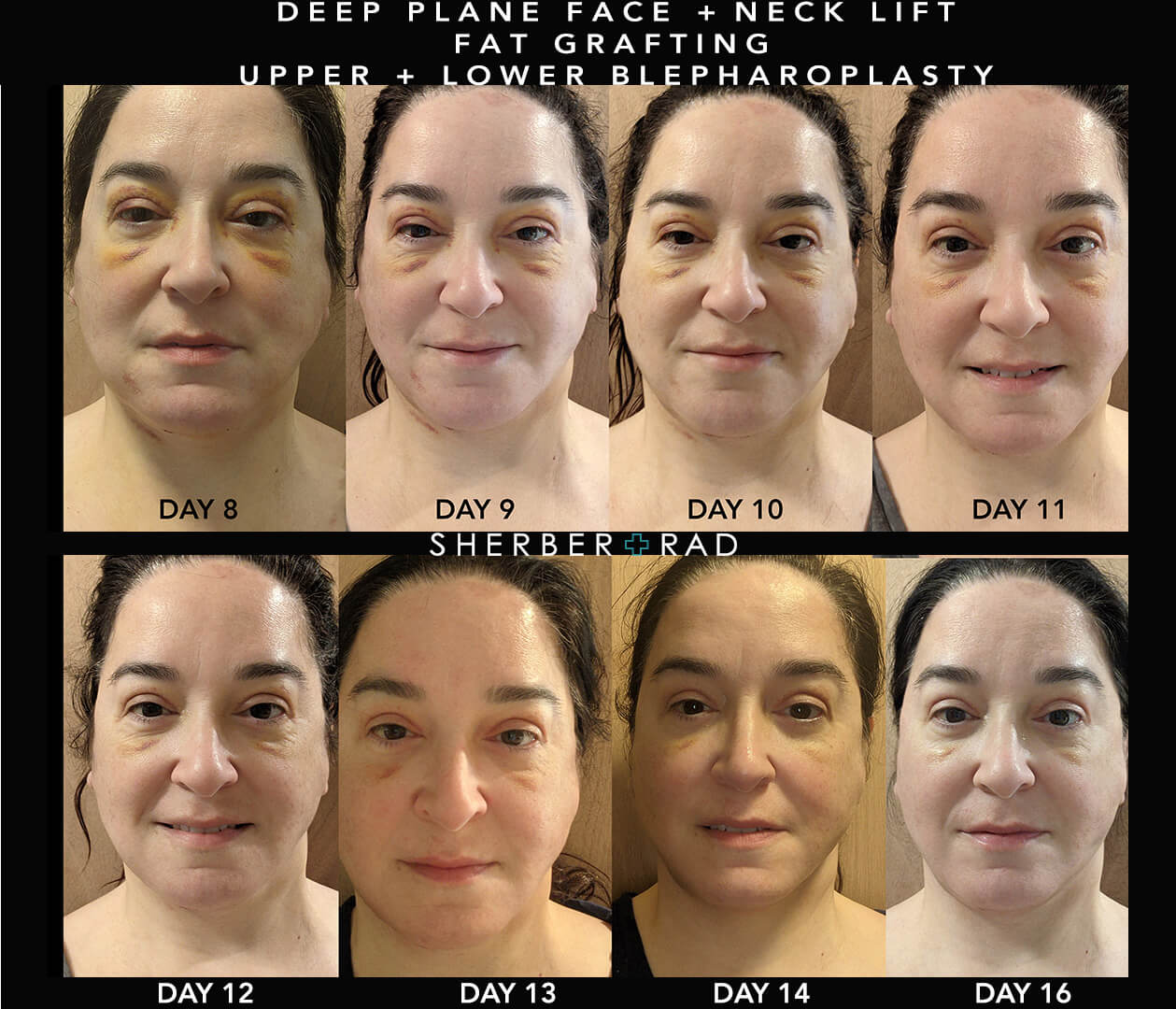
Dr. Rad will see you in our office on day 1 or 2 (sometimes 3) after surgery. Your head will be unwrapped, wounds assessed and drains checked. Typically Dr. Rad leaves drains in place for 4-5 days, and so he will explain how to manage drains.
Your facial appearance will look swollen, bruised and distorted (see images). This is normal and should not cause concern. Over time, this resolves and Dr. Rad will review the timeline of healing.
After this visit, shower as you usually would, and use your usual shampoo/conditioner. Dr. Rad recommends either Johnson&Johnson Baby Shampoo, or Mane&Tail shampoo and conditioner. You may notice reddish fluid wash out from your hair – this is not blood, but rather the prep solution used to cleanse your facial skin.
Only walking is encouraged for activity. No driving while on daytime narcotic pain medications (i.e. the first week).
Dr. Rad will remove drain tubes at 5-7 days after surgery. If you had eyelid surgery then sutures are removed at this step.
For bruising you may have laser treatment under Dr. Sherber’s care. Laser breaks up hemoglobin and allows the immune system to clear it more quickly.
Call 202-517-7299 or email contact@sherberandrad.com to schedule a laser appointment with Dr. Sherber. She will also give advice for how to optimize scar healing, optimize skin care and “protect your investment” to get the most longevity out of your facelift results.
Only walking is encouraged for activity. You may restart work-related activities and calls as needed. No heavy lifting for 2 weeks. Use your best judgment regarding items to lift: grocery bags, handbags and the like are fine. Heavy boxes of water are not. A general guide is < 15 lbs.
Subsequent recovery phase (2-6 weeks): Swelling and bruising gradually subside during this period, although they may still be present to some extent.
Most patients can resume light activities after the first week but should continue to avoid vigorous exercise and activities that could strain the incisions. Follow-up appointments with Dr. Rad will be scheduled to monitor your progress.
Long-term recovery (6+ weeks): By this point, the majority of swelling and bruising should have resolved, and you should start seeing the full results of your facelift. However, it’s important to note that individual healing rates can vary, and it may take several months for all swelling to completely dissipate and the final outcome to be evident.
• Getting back to exercise is progressive: Dr. Rad recommends walking the first week, Peleton/stationary bike the second week, stretching and working small muscle groups the third week, low weight/high repetitions the 4th week, more intense core-focused or heavier weights from fifth week onwards.
• You can return to work when you feel comfortable and capable. Most patients plan to take a few weeks off.
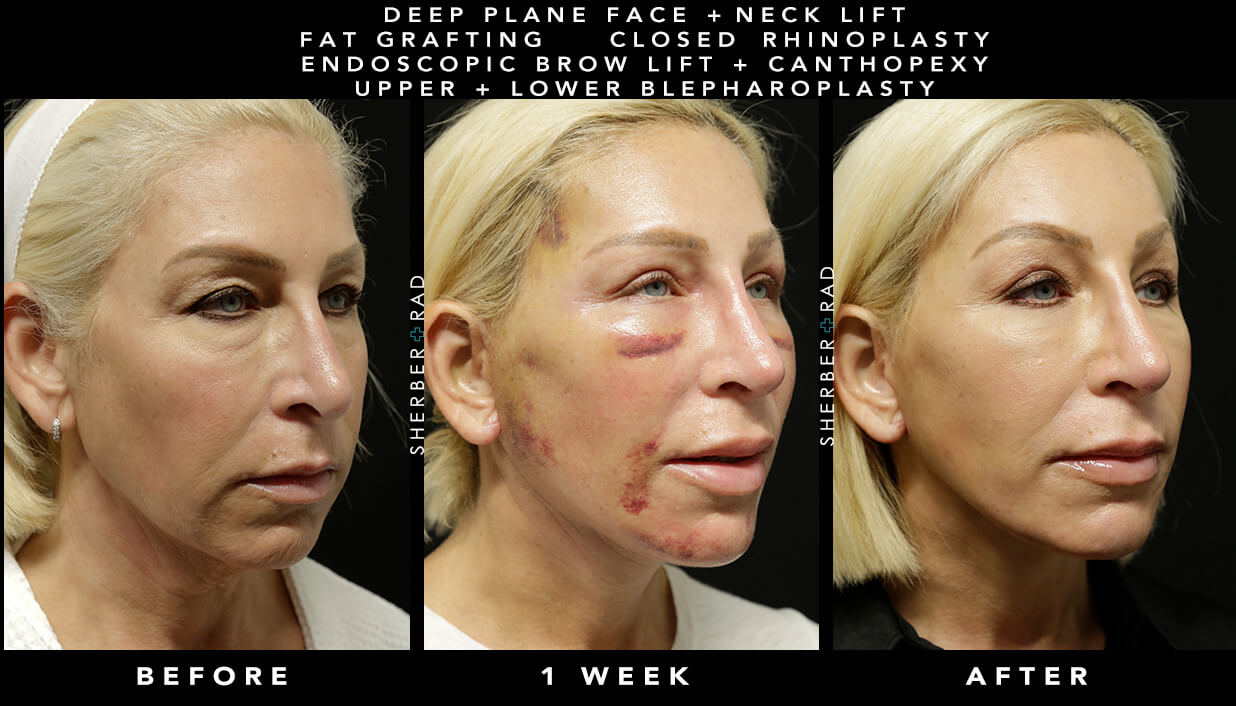
Recovery varies based on the extent of the facelift, individual healing abilities, and other factors. Ask Dr. Rad to guide you through the recovery process based on your unique situation.
Facelift procedures require anesthesia to ensure patients’ comfort and safety during surgery. The choice of anesthesia depends on various factors, including surgeon preference, the extent of the procedure, the patient’s health status (presence of heart, lung, kidney or endocrine illnesses), and patients’ preference. The 3 most common types of anesthesia used for facelift surgeries are:
Patients are asleep and are unaware during the surgery. During GA, the anesthesia team administers a combination of anesthetics to optimize the depth of anesthesia while minimizing side effects. This usually involves propofol for quick induction, and inhaled gas anesthetic for stable maintenance, and an array of anti-nausea medicines to reduce nausea side effects, the most common issue with GA.
In terms of what patients experience, your last memory of the process is rolling into the OR, and then the next memory is waking up in the recovery room. You feel nothing or experience nothing of surgery. Dr. Rad’s anesthesia teams are exceptionally skilled in ensuring comfort and safety. Patients do not experience “waking up” episodes, nor do they have any memory of the procedure.
GA involves administering intravenous medications and inhaled anesthetic to induce sleep and keep the patient pain-free throughout the procedure. This involves an airway tube (“endotracheal tube”) which serves two purposes: (i) to deliver the inhaled anesthetic which gives long lasting anesthesia, and (ii) protects your windpipe preventing any fluids, secretions or phlegm from getting into your lungs which can cause a pneumonia or airways spasm/constriction (“laryngospasm”). Without protection of your airway, such as with IV sedation only, the risk of airway/lung problems is higher.
Patients awaken quickly because the depth of anesthesia is not nearly as deep as required for other types of surgery (think liver, kidney or heart surgery). Within 15-20 minutes you are awake enough to remove the airway tube, and then you are rolling to recovery. Typically patients stay for a couple or a few hours in recovery before going home.
This type of anesthesia is needed when deep plane face and neck lift with deep neck sculpting (gland reduction) is being done.
Dr. Rad advises not thinking of GA as “being on a breathing machine” or being dangerous. Rather, the anesthesia machine is supporting your natural breathing and protecting your airway. In fact, GA is for comfort and safety. In the hands of a board certified anesthesiologist (with whom Dr. Rad always works) in the safest possible environment (accredited hospital-based surgery centers) GA is very safe, in fact it is much safer that the cumulative risk of driving a car every day.
In some cases, combining sedation with local anesthesia (injected numbing medicine) is used. In this case, patients often receive propofol for the IV anesthetic to induce sedation and which helps them relax and feel drowsy during the procedure. While the patient is not fully unconscious with this approach, they are generally not aware of the surgery and experience little to no discomfort.
This does not involve the inhaled anesthetic as in GA, and does not require an airway tube. You are breathing on your own anesthesiologist maintains your level of anesthesia with propofol and other IV medicines. Oxygenation is supported with supplemental oxygen.
Patients may be a candidate for this type of anesthesia for shorter procedures and neck lift that does not involve deep neck sculpting.
This type of anesthesia is the simplest of all, and involves injecting numbing medicine throughout the tissues to be lifted. Dr. Rad uses local anesthetics routinely in the office and this does not require going to an OR.
We start with applying topical numbing which dulls sensation, then injected numbing medicine is given while you are awake.
Patients are candidates for this approach when undergoing in-office mini-face lifts, upper blepharoplasty, buccal fat reduction and direct brow lifts.
Overall, the choice between these types of anesthesia will be discussed during the pre-operative consultation with the surgeon. The surgeon will consider the patient’s medical history, the complexity of the procedure, and the patient’s preference when deciding on the appropriate anesthesia.
Proper skin care is critically important as your tissues will be inflamed after surgery. “Inflammation” is a common term that is commonly associated with harmful internal processes. However, inflammation is a normal process whereby the immune system is activated to heal tissue trauma caused by surgery. This is a normal part of healing. However, too much inflammation can be harmful and so we must be sure to avoid anything that can irritate your skin or worsen inflammation.
It is important to use the right products immediately after surgery. Dr. Rad recommends avoiding products that have stimulatory ingredients such as retinols and using a gentle skin care with products that have high concentrations of anti-oxidants to calm and soothe inflamed skin. Drs. Sherber and Rad recommend the following curated, science-backed products for daily use after facelift surgery (you may order products online or ask our staff for these products from our Boutique). Products are at different price points but we have vetted these products for their high quality ingredients and calming formulations for optimal facelift healing.
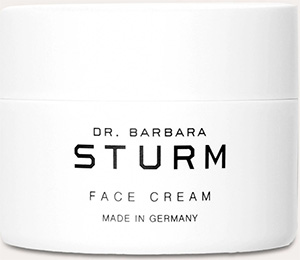
• Cleanser: use a high quality oil-based cleanser. Drs. Sherber and Rad recommend Eve Lom Gel Balm Cleanser or Sturm Facial Cleanser. Follow the instructional video on the website. Massage a grape-sized amount of balm or 2 pumps of foam onto dry skin for 60 seconds, then enter the shower. Apply a warm/moist muslin cloth to your face for 30 seconds, repeat twice more, then buff your skin on the last application.
• Incision Care: use La Mer The Concentrate or to your incisions only.
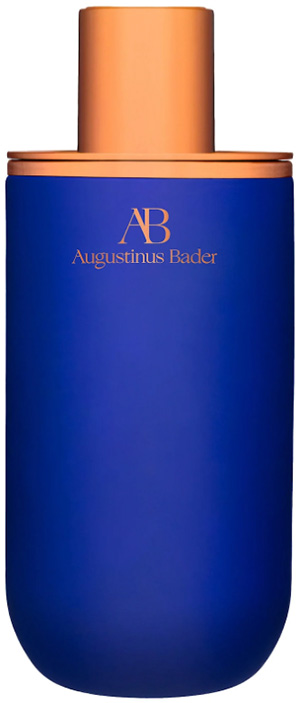
• Face and Neck Care: you may select from the following:
– Sturm Face Cream (fragrance free, best for sensitive skin)
– Creme de la Mer (contains fragrance).
– Augustinus Bader The Rich Cream for dry skin (fragrance free)
– Augustinus Bader The Cream for oily skin (fragrance free)
– Caudalie Premier Cru (contains fragrance)
• Eyelid Care: using a separate eye cream for eyelids is important to prevent milia, small bumps that can develop when using thick face creams or ointments.
– Sturm Eye Cream
– La Mer Eye Concentrate
– Augustinus Bader Eye Cream
– Caudalie Eye Cream
• Lip Care:
– Sturm Lip Balm
– La Mer Lip Balm


Our plastic surgery office in Washington DC is centered on your comfort and privacy. You’ll be received by our exquisitely attentive staff, and escorted to your own private cabana wherein you’ll feel relaxed and comfortable while consulting discreetly with Dr. Rad. First Dr. Rad will determine if you are a good candidate for surgery and during your consultation you should decide if Dr. Rad is the right surgeon for you. Credentials are crucial and, in addition to being Board certified in plastic surgery, Dr. Rad is Assistant Professor at Johns Hopkins, and he enjoys an impeccable reputation as a top flight aesthetic surgeon. His facial plastic surgery expertise is sought out as one of the best surgeons in Washington DC, northern Virginia and the US. Your safety is Dr. Rad's primary concern and he will review your medical history. You should inform Dr. Rad of any medical problems or medications that may affect your healing. If you are medically appropriate to undergo surgery then Dr. Rad's focus will be to understand what specific aesthetic concerns you have. Washington DC patients expect natural results with minimal downtime. Dr. Rad will spend time carefully listening to your concerns, asking clarifying questions and then masterfully guiding you, step by step, to understand how your unique anatomy can be improved to convey a rested appearance. Dr. Rad’s goal is to determine the most comprehensive approach for long lasting, natural results while minimizing downtime. Dr. Rad first needs to understand your specific concerns and you should prepare your thoughts prior to your consultation. Think of words that convey how you feel about your appearance. For example, Washington DC patients often say they look fatigued, tired or lackluster because of undereye bags or dark undereye circles, or they look sad, upset or disinterested such as from heavy eyebrows, excess skin above the eyes or downturned corners of the mouth. Patients often relate concerns of looking older than how they feel and this can be caused by jowls, nasolabial folds, loose neck skin, lines and wrinkles. Try to put into words how your appearance bothers you, and the priority you give to each area. Dr. Rad will then present to you his expert opinion about which procedures would be best to restore your anatomy to create a rested and refreshed appearance. And since surgery is intricate Dr. Rad will guide you through a stepwise approach of aesthetic analysis and he’ll deliver his recommendations in a clear and honest manner. Dr. Rad will present all options available in modern day surgery, both non-surgical and surgical. Dr. Rad and Board certified dermatologist Dr. Sherber often collaborate to optimize patients’ results and to minimize invasiveness. As such Dr. Rad’s modern approach to surgery harnesses the power of both dermatology and plastic surgery as both specialities address different aesthetic challenges. For example, plastic surgery is effective to lift, tighten and volumize loose, atrophied tissues, whereas dermatologic treatments such as laser, radiofrequency tightening and skincare are best to improve skin texture, pigmentation and tone. Dr. Rad can address any concerns regarding skin quality and how to obtain and maintain optimal results. Dr. Rad will review with you photos of his patients’ results (many of which you’ll not find online due to privacy concerns) to highlight his aesthetic approaches and skill. He will take your photographs, which remain confidential, to assist with the planning of your surgery. For your safety Dr. Rad performs surgery in a hospital-based operating room, considered to be the safest environment, rather than in the office. Anesthesia is delivered by a board certified anesthesiologist (MD) and you’ll be under light anesthesia which is important for your safety and comfort. You will receive a customized quote for the procedures in which you’re interested. Once approved we may then move forward with pre-operative preparations and you will meet with Dr. Rad again at your final in person consultation prior to surgery. Dr. Rad’s reputation as one of the most technically gifted surgeons attracts patients nationally and from around the world. We cater to patients from across the globe by arranging virtual consultations, luxury accommodations at The Jefferson hotel, Washington DC’s most luxurious 5 star boutique hotel, as well as private nursing care. Your privacy, comfort and safely achieving exceptional results are our top priorities.

WHAT CAN I EXPECT FROM MY CONSULTATION WITH DR. RAD?

Dr. Rad’s credentials speak for themselves: Princeton (B.S.E, Magna Cum Laude), Duke School of Medicine (M.D.) and University of London (Ph.D.) educated and Johns Hopkins Plastic Surgery trained, he is a Diplomate of the American Board of Plastic Surgery, Assistant Professor at Johns Hopkins, and long-standing member of the American Society of Plastic Surgeons and the American Society of Aesthetic Plastic Surgery. Dr. Rad is considered an expert in facial plastic surgery and microsurgery. He is ranked the #1 plastic surgeon in Washington DC based on aggregate ratings from all independent ranking websites: “top rated local“, “three best rated” top plastic surgeon and “top plastic surgeon reviews“. SHERBER+RAD have never engaged in paid advertising, and all rankings, reviews are from vetted and respected sources.
In Dr. Rad’s DC practice, the cost for facial aesthetic lifts starts at $18,000+ for targeted in office “mini lift”, $29,000+ for more advanced face and neck lifts, (“deep plane” or ponytail methods), $49,000+ for surgeries combining other procedures (blepharoplasty, brow lift, fat grafting, etc.), $75,000+ for complex anatomy, corrective work and up to $150,000 for extensive facial surgery requiring multiple operations (such as adding rhinoplasty, facial bone augmentation or shaping, custom facial implants, etc.). Note that pricing is customized for each patient and these guidelines do not necessarily apply uniformly. Also keep in mind these are approximate ranges and total cost depends on multiple factors: your unique anatomy, goals, complexity of the procedures, recommended techniques, whether corrective work is needed, in-office or hospital-based operating facility, and combining multiple procedures (increasing concessions apply for multiple procedures).
Although you may receive varying cost estimates from other practices, keep in mind that your surgeon’s education and training, plastic surgery board certification, his/her experience (at least 8 years of experience after residency is recommended), and the “X” factor of aesthetic artistry and surgical skill (i.e., talent) of your surgeon are important factors in pricing. Dr. Rad’s goal for every patient is to achieve nuanced and natural results with minimal recovery, and we have mechanisms in place to bring your goals in financial reach.
Dr. Ariel Rad strives to deliver the best facelift Washington, DC has to offer. To find out more about facial cosmetic surgery and our financing options, schedule your consultation by contacting our office today.
We look forward to welcoming you for your private consultation with Dr. Rad
Enjoy a unique experience centered on your privacy and on unhurried attention to your concerns
Or Send a confidential inquiry and our staff will be happy to reach out to you
Sherber+Rad1101 15th St. NW, Suite 100, Washington, D.C. 20005
<!– end services-container —